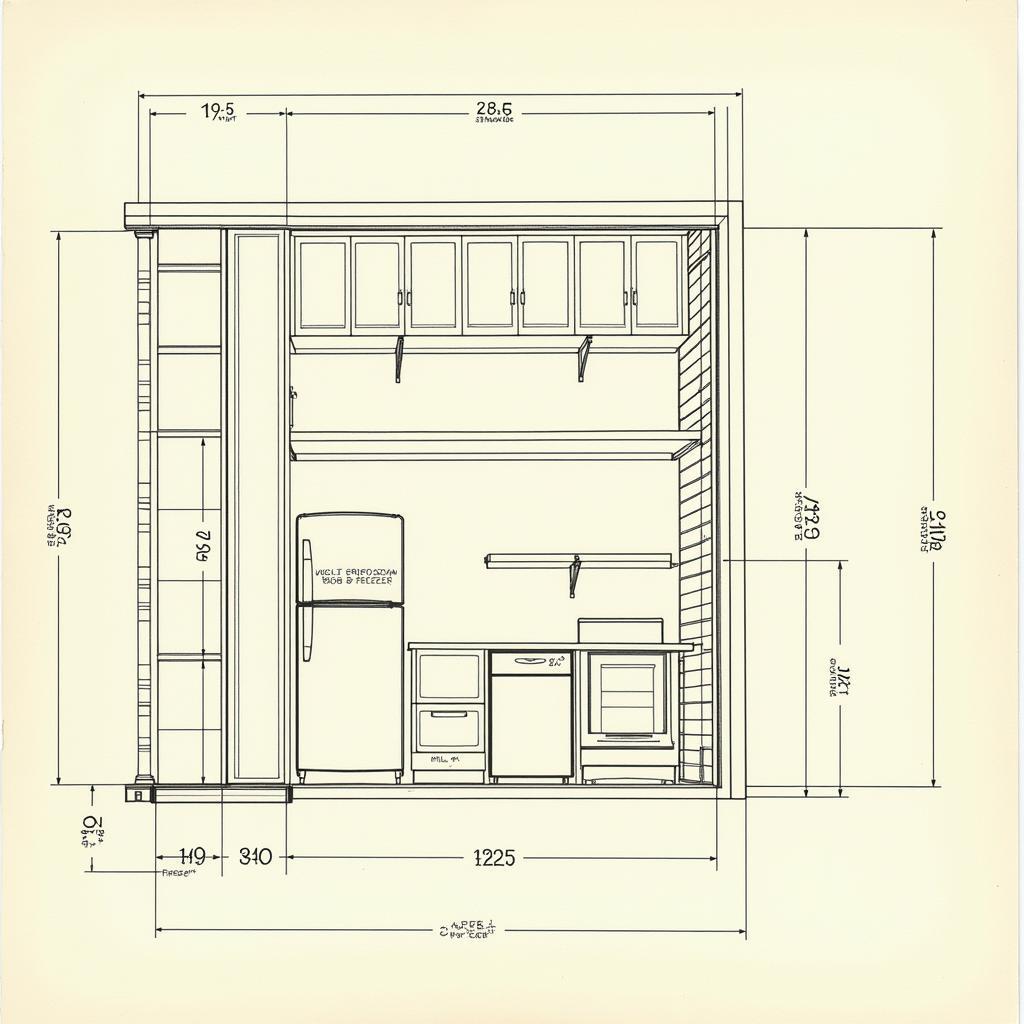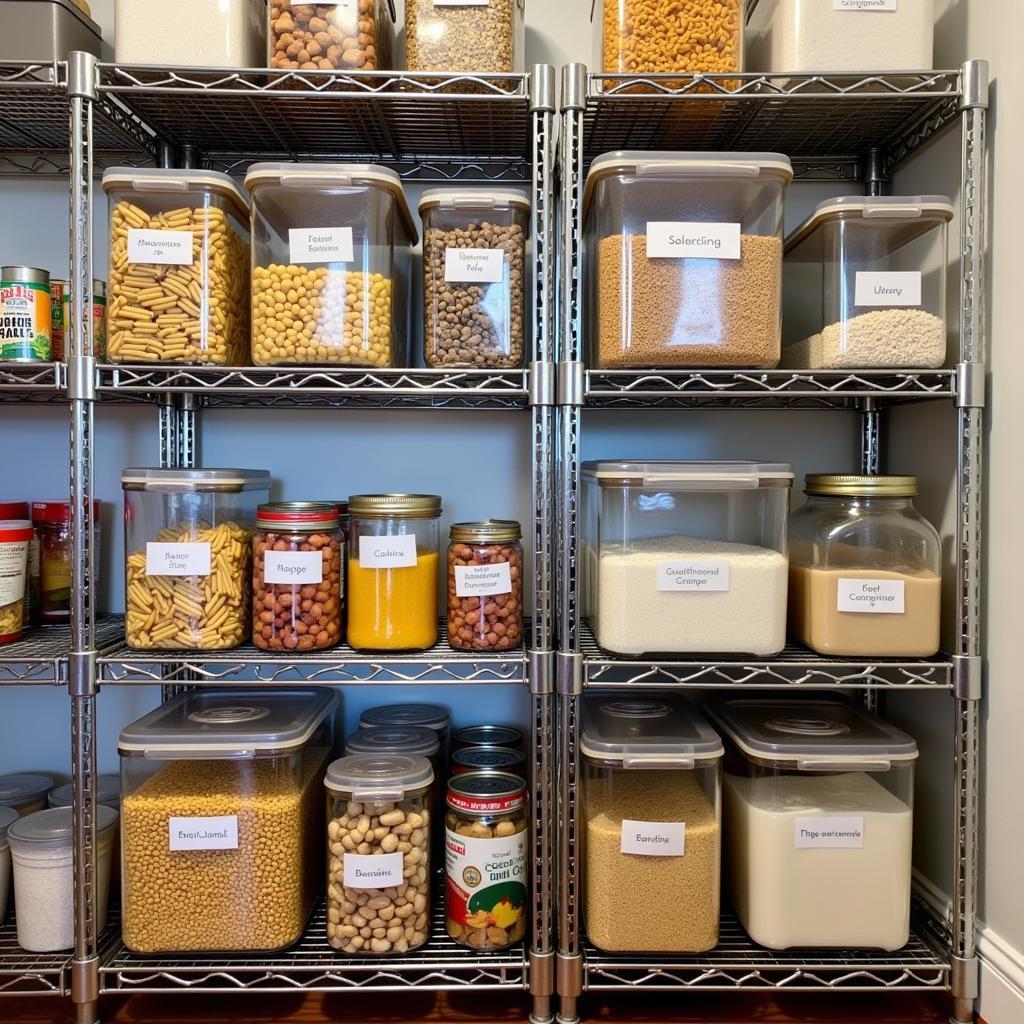Building a proper food storage room is crucial for maintaining quality, freshness, and minimizing waste. Whether you’re a homeowner looking to maximize pantry space or a business owner needing efficient inventory management, understanding How To Build A Food Storage Room is an investment in both time and money. This guide will cover everything from planning and design to organization and maintenance, ensuring your food storage room is both functional and effective.
Planning Your Ideal Food Storage Space
Before diving into construction, careful planning is essential. Consider these key factors:
- Purpose: What types of food will you be storing? This will determine the necessary temperature, humidity, and shelving requirements. Will you be storing dry goods, perishables, or both?
- Size and Location: How much space do you have available? Where is the most logical location within your home or business? A cool, dry, and accessible location is ideal. Avoid areas prone to temperature fluctuations or pest infestations.
- Budget: Establish a realistic budget for materials, equipment, and labor.
- Local Regulations: Check local building codes and health regulations regarding food storage.
 Food Storage Room Planning Blueprint
Food Storage Room Planning Blueprint
Essential Components of a Food Storage Room
A well-designed food storage room incorporates several key components:
Ventilation and Temperature Control
Proper ventilation prevents moisture buildup, which can lead to mold and spoilage. A well-ventilated room also helps regulate temperature. Consider installing an exhaust fan and a temperature control system to maintain optimal conditions depending on the type of food stored. What are the ideal temperatures for food storage? Dry goods are best stored between 50°F and 70°F, while refrigerated foods require temperatures below 40°F.
Shelving and Storage Solutions
Choosing the right shelving is key to maximizing space and accessibility. Opt for adjustable shelves made of durable, easy-to-clean materials like stainless steel or wire shelving. Consider using clear storage containers to easily identify contents and prevent pests. A food serving cart on wheels can be useful for transporting items within the storage room.
 Organized Food Storage Shelving
Organized Food Storage Shelving
Lighting and Security
Adequate lighting is crucial for safe navigation and inventory management. Install bright, energy-efficient lighting fixtures. Consider adding security measures like locks and alarms to prevent unauthorized access and protect your valuable inventory.
“Proper lighting not only enhances safety and organization but also allows for quick and easy inventory checks, minimizing the risk of overlooking expired or spoiled items,” says Amelia Carter, a certified food safety consultant.
Building Your Food Storage Room: A Step-by-Step Guide
- Prepare the Space: Clear out the designated area and ensure it is clean and dry. Repair any cracks or holes in the walls and floor.
- Install Insulation: Proper insulation helps maintain a stable temperature and reduces energy costs.
- Install Ventilation: Set up an exhaust fan and ventilation system to control humidity and airflow.
- Build Shelving: Install sturdy, adjustable shelving units, ensuring they are securely anchored to the walls. You can find some helpful ideas by researching food vendor tent ideas. Although tents are temporary, some of the organizational principles can apply to a permanent storage room.
- Install Lighting and Electrical Outlets: Ensure adequate lighting and convenient access to power outlets.
- Add Security Measures: Install locks, alarms, or other security measures as needed.
Maintaining Your Food Storage Room
Regular maintenance is essential for keeping your food storage room functional and hygienic:
- Clean Regularly: Clean shelves, floors, and walls regularly to prevent pest infestations and maintain sanitary conditions.
- Inspect for Pests: Regularly check for signs of pests and take appropriate action if needed.
- Monitor Temperature and Humidity: Regularly check temperature and humidity levels to ensure optimal storage conditions.
- Rotate Stock: Implement a FIFO (First In, First Out) system to minimize food waste and ensure freshness. Consider utilizing some shelf stable food recipes to rotate older inventory.
- Inspect Equipment: Regularly inspect ventilation systems, temperature control units, and lighting to ensure they are functioning correctly.
“Regularly assessing your food storage needs and adapting your organization strategies can significantly improve efficiency and reduce food waste,” advises David Miller, a professional organizer specializing in commercial kitchens. Knowing the food truck pros and cons can also offer valuable insights into optimizing your food storage strategies, even if you aren’t operating a mobile kitchen.
Conclusion
Building a food storage room requires careful planning and execution, but the benefits in terms of food preservation and organization are significant. By following these guidelines and investing in the right equipment, you can create a food storage solution that meets your specific needs and helps you maximize efficiency and minimize waste. How to build a food storage room efficiently hinges on understanding your needs and planning accordingly.
Need specialized equipment like a food warmer truck for sale? Contact us!
When you need assistance, please contact us at Phone Number: 02437655121, Email: minacones@gmail.com Or visit us at: 3PGH+8R9, ĐT70A, thôn Trung, Bắc Từ Liêm, Hà Nội, Việt Nam. We have a 24/7 customer support team.